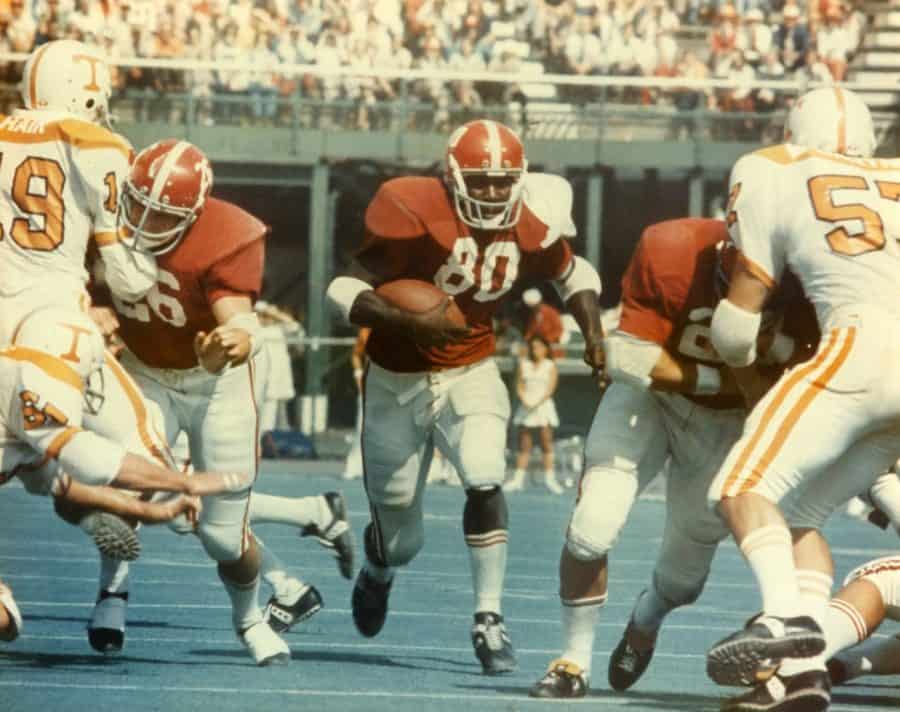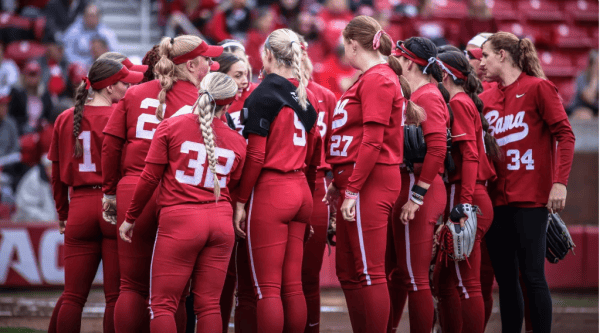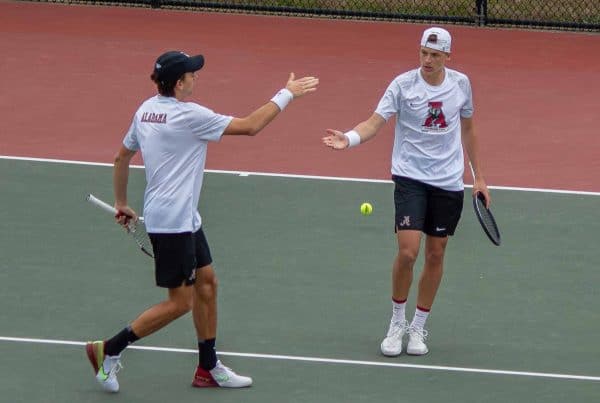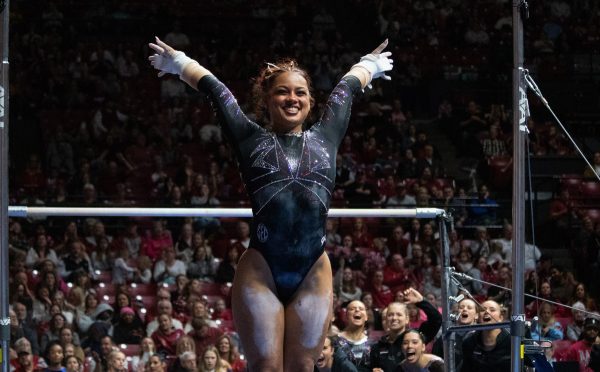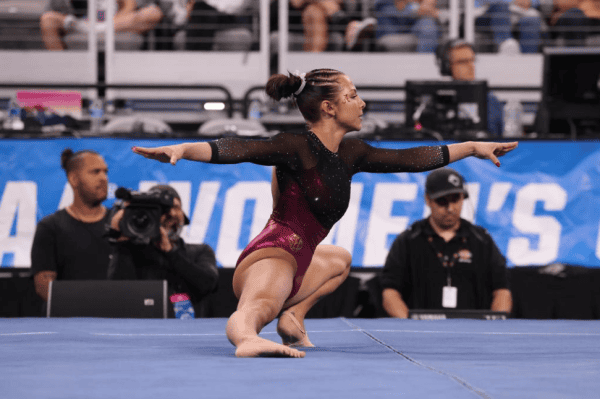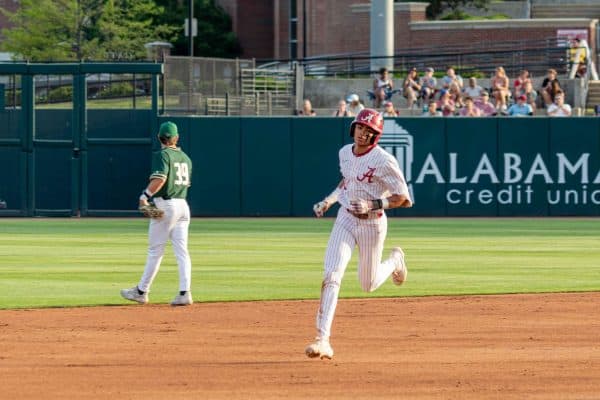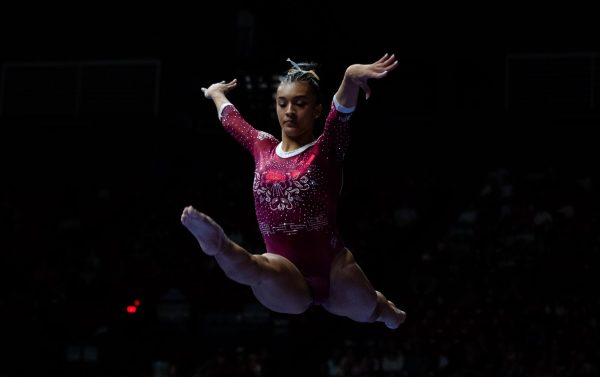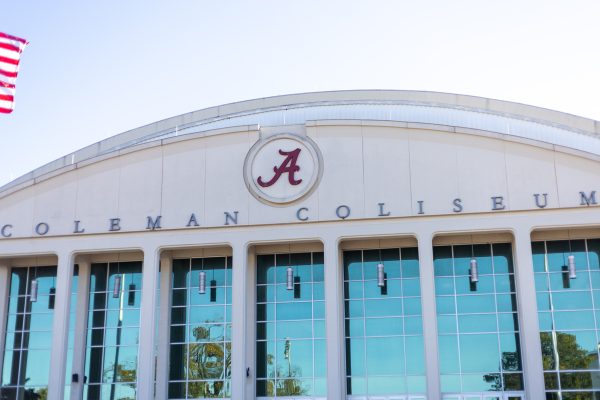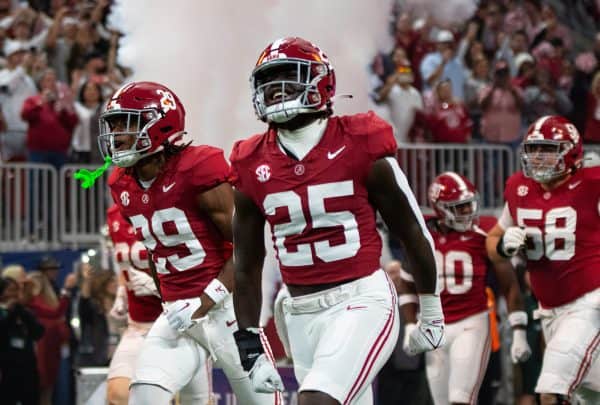Planting a Seed: Black athletes who paved the way
Courtesy of Paul W. Bryant Museum
Wilbur Jackson was the first football player to receive a football scholarship. He played from 1971 to 1973.
October 21, 2021
The pride of The University of Alabama comes from its athletic programs. Thousands of fans, students and athletes travel to Tuscaloosa to experience Alabama athletic events.
In recent years, some of the top athletes from Alabama athletic programs have been Black students. From former wide receiver DeVonta Smith to former gymnast Ashley Miles, the Crimson Tide has been home to its fair share of Black superstar athletes.
In order for athletes like Smith and Miles to shine, someone had to plant a seed. But, who were the men and women who paved the way for the Black athletes at the University?
On May 16, 1963, a federal court ordered the University to admit Vivian Malone and James Hood to Alabama for the summer term. Four years later, a Black football player, Wilbur Jackson, walked onto the field of what was then Denny Stadium for the first time. This started the domino effect that led to the integration and rich history of Black athletes at Alabama.
In 1967, freshman Dock Rone sat across from Paul “Bear” Bryant and announced his intention to walk on to the Alabama football team.
Bryant told Rone of the difficulties of making the team but welcomed Rone to try out if he passed the physical exam and was academically eligible.
“I admire your courage, young man,” Bryant said to Rone.
Four other Black students from Alabama joined Rone when he reported for the Tide’s first spring practice on April 1, 1967 — Arthur Dunning from Mobile, Melvin Leverett from Prichard, Andrew Pernell from Bessemer and Jerome Tucker from Birmingham.
The first step was taken. Rone became the first Black athlete to wear an Alabama football uniform. On May 5, 1967, Rone, Tucker and Pernell took the field in the annual Alabama A-Day game.
Although their journeys at Alabama were cut short, these five men planted a seed for other Black athletes to grow from. Three years later, Alabama signed its first Black scholarship athlete, Wendell Hudson.
Hudson is a native of Birmingham, Alabama. Former Alabama basketball head coach C.M. Newton gave the slim, 6-foot-6-inch teenager the chance to make history in Tuscaloosa.
Hudson said he “did not really have a clue what he was really doing when he came here from a historical standpoint.”
To Hudson, it was an opportunity to play the sport he loved. Hudson let his talent on the court speak for itself. Hudson was named SEC Most Valuable Player twice in his collegiate career — in 1972 and 1973. He also led the SEC during those years.
This impact was felt for years to come. By Hudson’s senior year, he was one of several Black players on the basketball team. In 1970, Wilbur Jackson became the first Black football player on scholarship.
“[Hudson] paved the way for guys like me,” former Alabama point guard Kira Lewis Jr. said. “Without him, maybe I’m probably not here; maybe I am. More than likely I’m not here, so with him doing what he did, that’s a big accomplishment. Hats off to him.”
The path for Black female athletes at the University was harder to pave. Soon after the federal government passed Title IX in 1972, the floodgates opened for Black female athletes.
Title IX states that no educational institution receiving federal financial assistance can exclude a person from an educational activity or benefits on the basis of gender.
That fall, The University of Alabama had its first Black cheerleader.
Brenda McCampbell Lyons’ brother was already a student at the Capstone. She never thought about the legacy her time at the University would leave.
“Growing up, I always liked to follow him and do everything he did, so I came to Alabama, just like he did,” Lyons said.
Lyons started cheerleading during her junior year of high school. She didn’t consider cheering in college until she saw a flyer for freshman tryouts.
A group of Black male students created a community to support Lyons and the other Black female students trying out for the cheerleading team. The men helped the women practice ahead of tryouts.
All their hard work paid off. Lyons was named to the team and became the first Black woman to set foot on the field at Denny Stadium.
Like the Black athletes before her, Lyons dealt with racism. At her first game, the security at the gate wouldn’t let her in.
“The climate of the time, I think many — especially Black students — knew that it was kind of what you signed up for,” Lyons said.
Still, Lyons had a community of support around her at the University and at home. Her parents supported her because they knew how much she wanted to be a cheerleader.
Similar to those before her, Lyons’ dedication to her sport set the standard for many who followed.
In 1988, Dione “Dee Dee” Foster Worley was an accomplished elite gymnast. Foster was set to compete in the 1988 U.S. Olympic Trials, but an injury kept her from participating.
The following year, Foster enrolled at the University and became the first Black female scholarship athlete. With the direction of former coaches Sarah and David Patterson, Foster became a force in the NCAA circuit.
“Nobody ever showed up here with more determination to succeed than Dee,” David Patterson said. “She set her goals high, and then she went out and did it.”
Foster was the star athlete in the all-around competition and a pillar of the dynasty Sarah Patterson built at the University.
She set an NCAA record with a perfect 10 at five consecutive meets, was named SEC Female Athlete of the Year and was nominated for NCAA Female Athlete of the Year.
Each of these athletes contributed to the winning culture that is synonymous with Alabama. They broke down barriers and created a tradition of stellar Black athletes at Alabama.
Through their dedication to their sports, they created a long-lasting legacy at the University.
This story was published in the Legacy Edition. View the complete issue here.
Questions? Email the Sports desk at [email protected].

